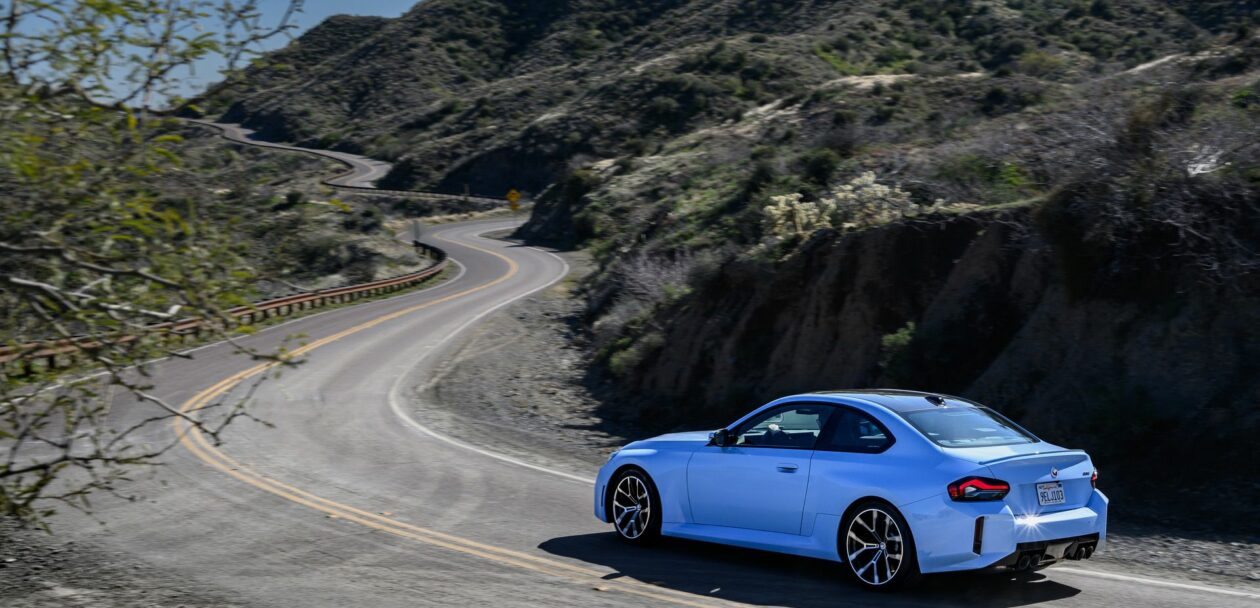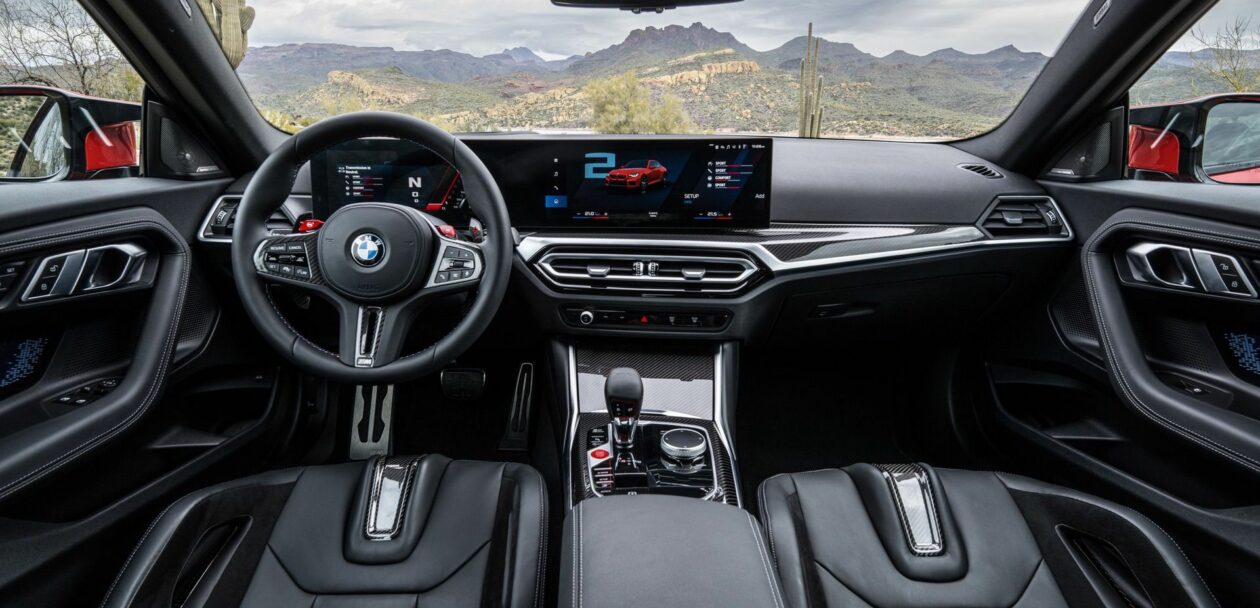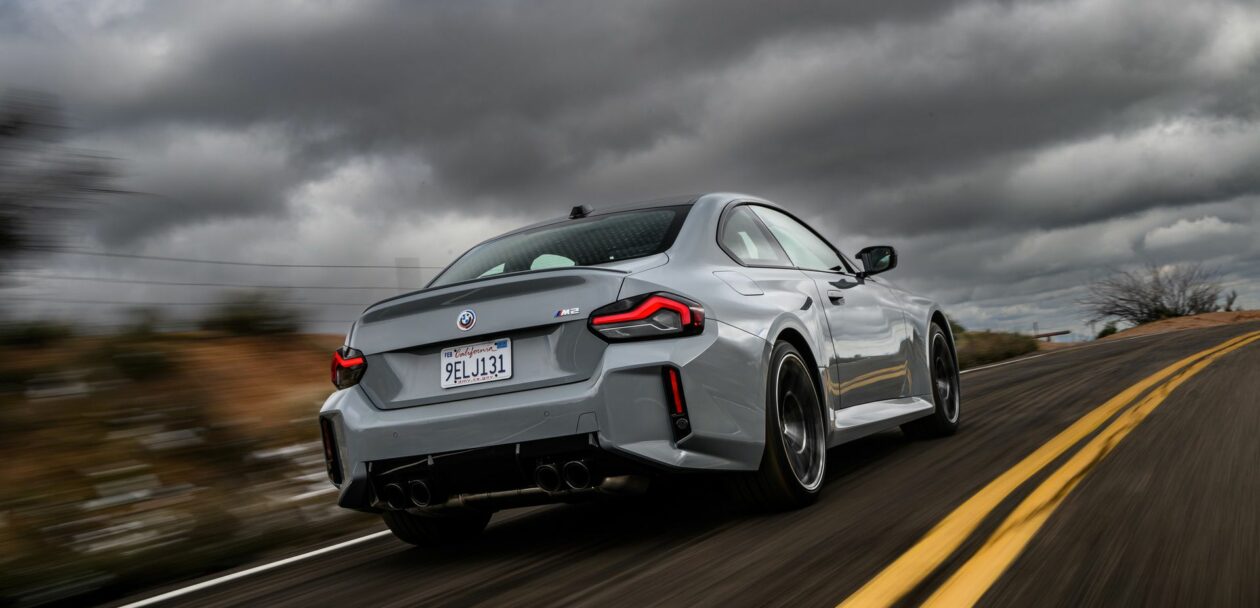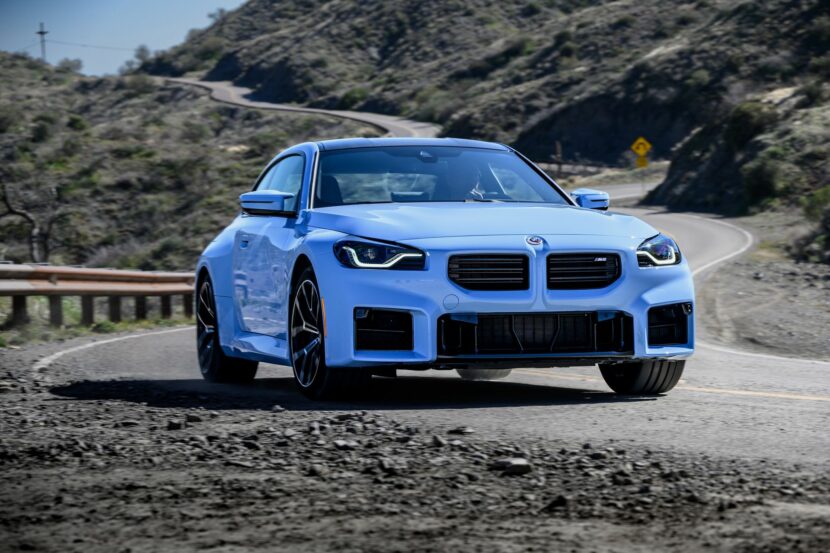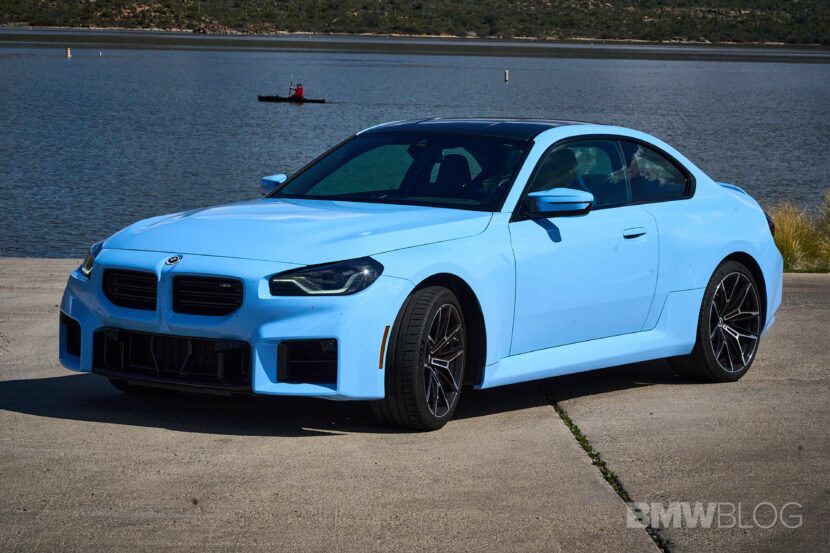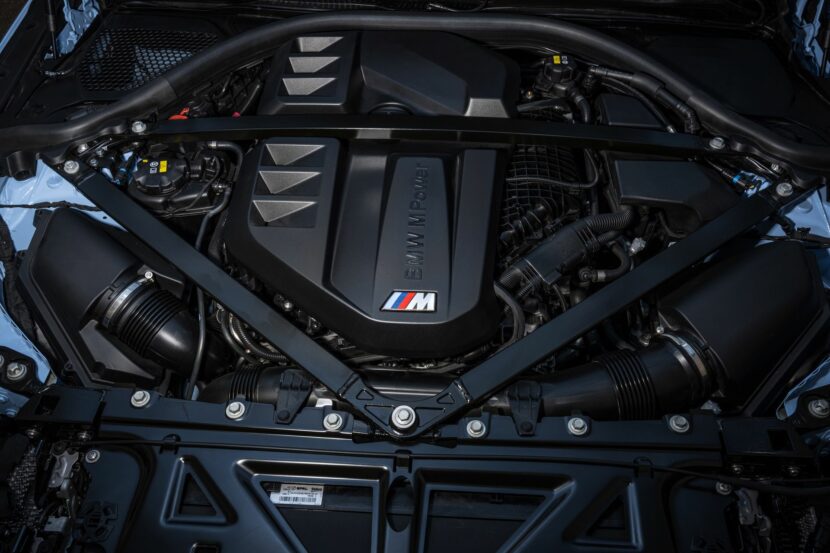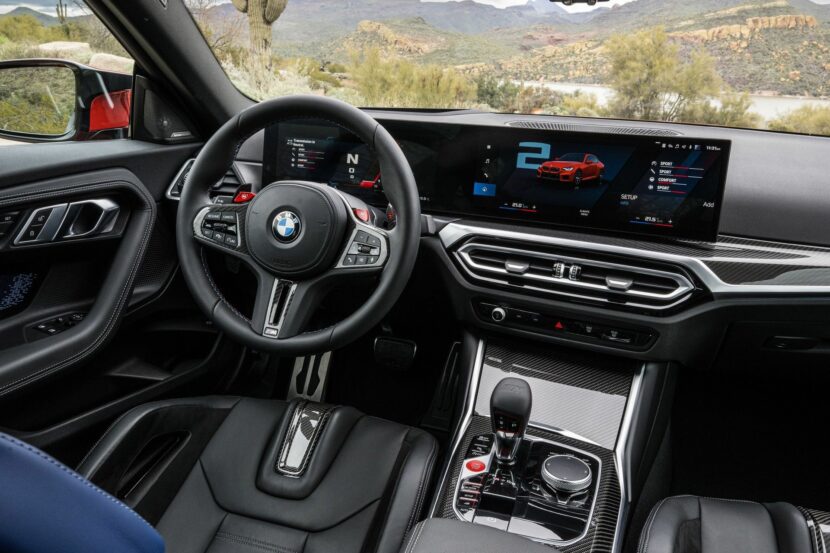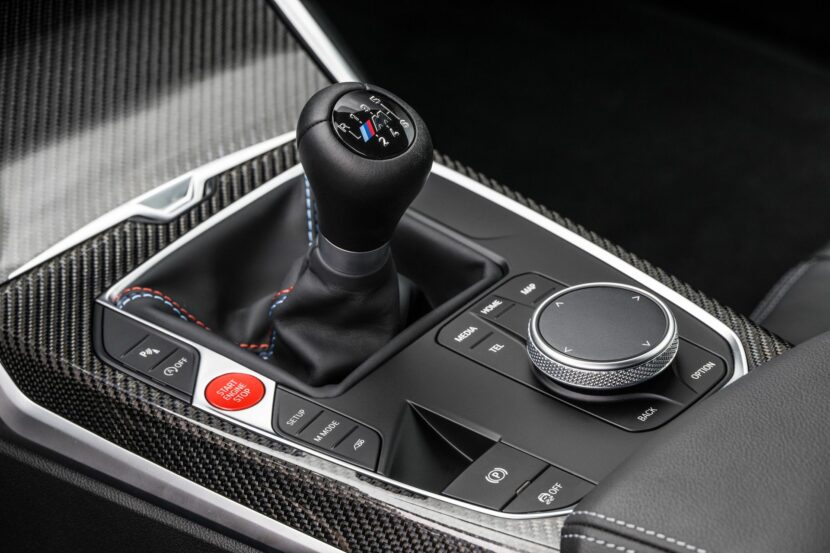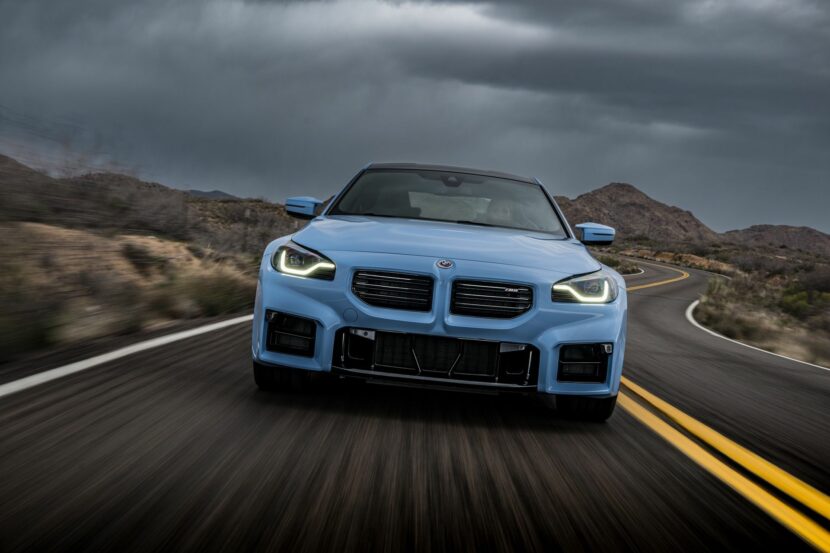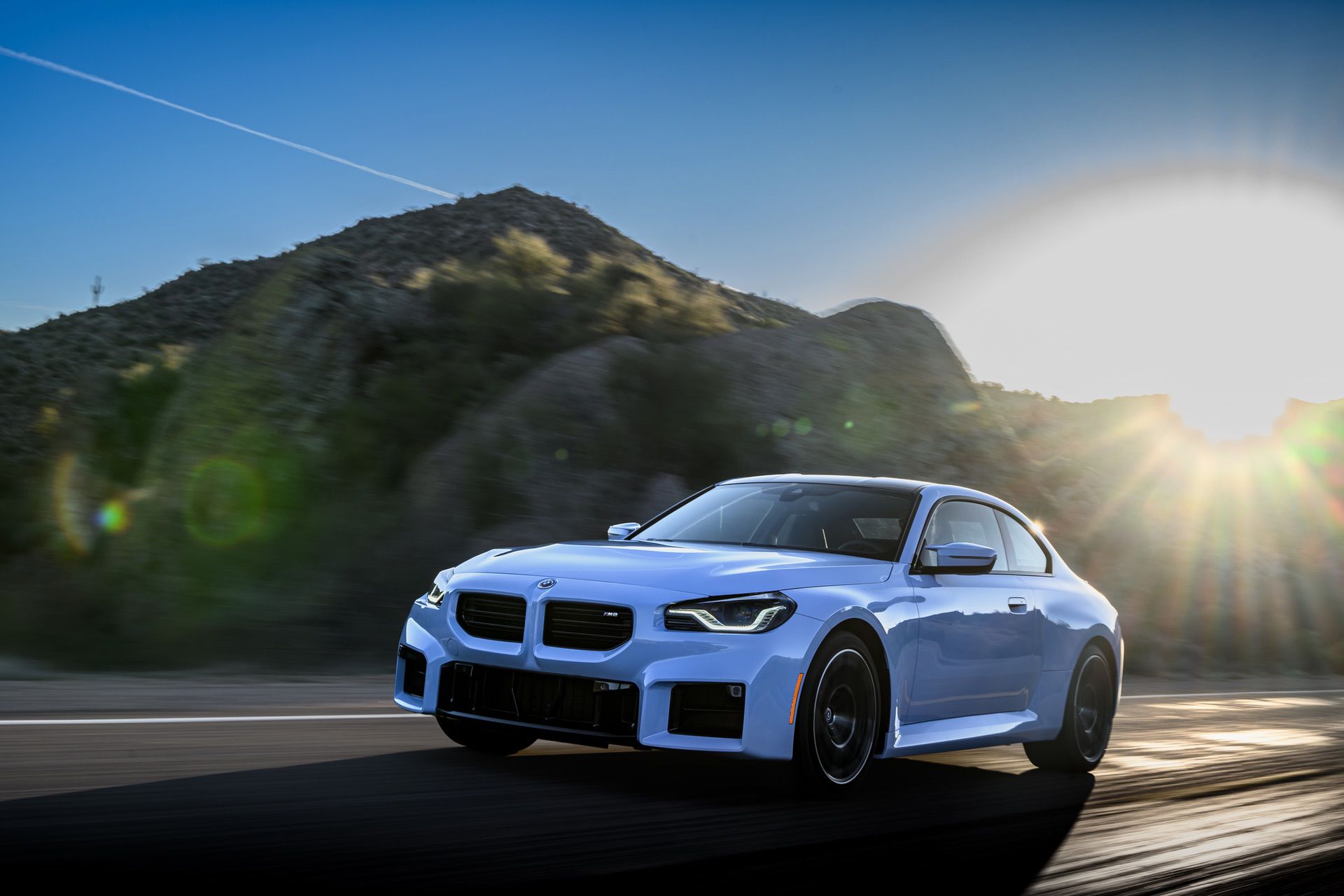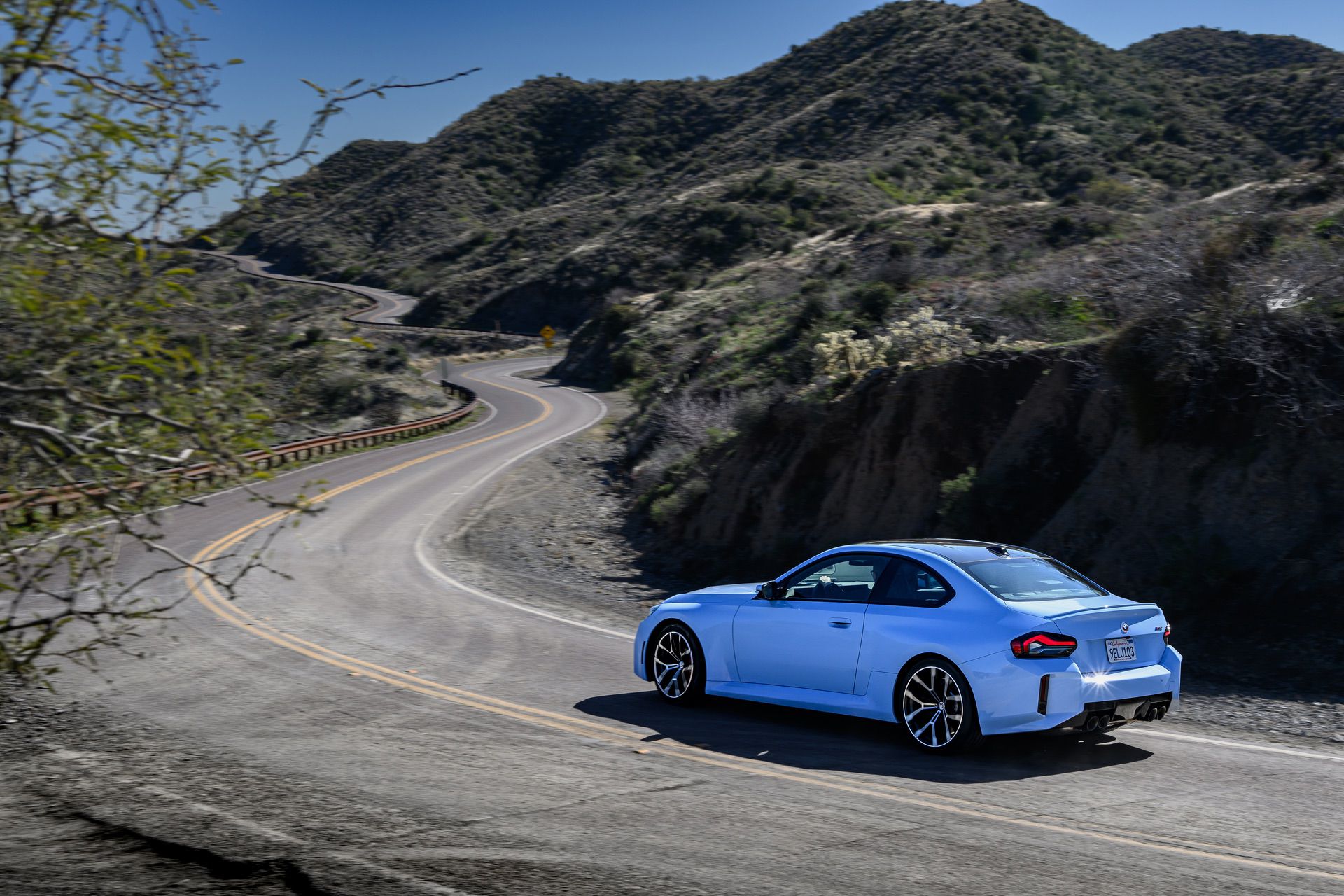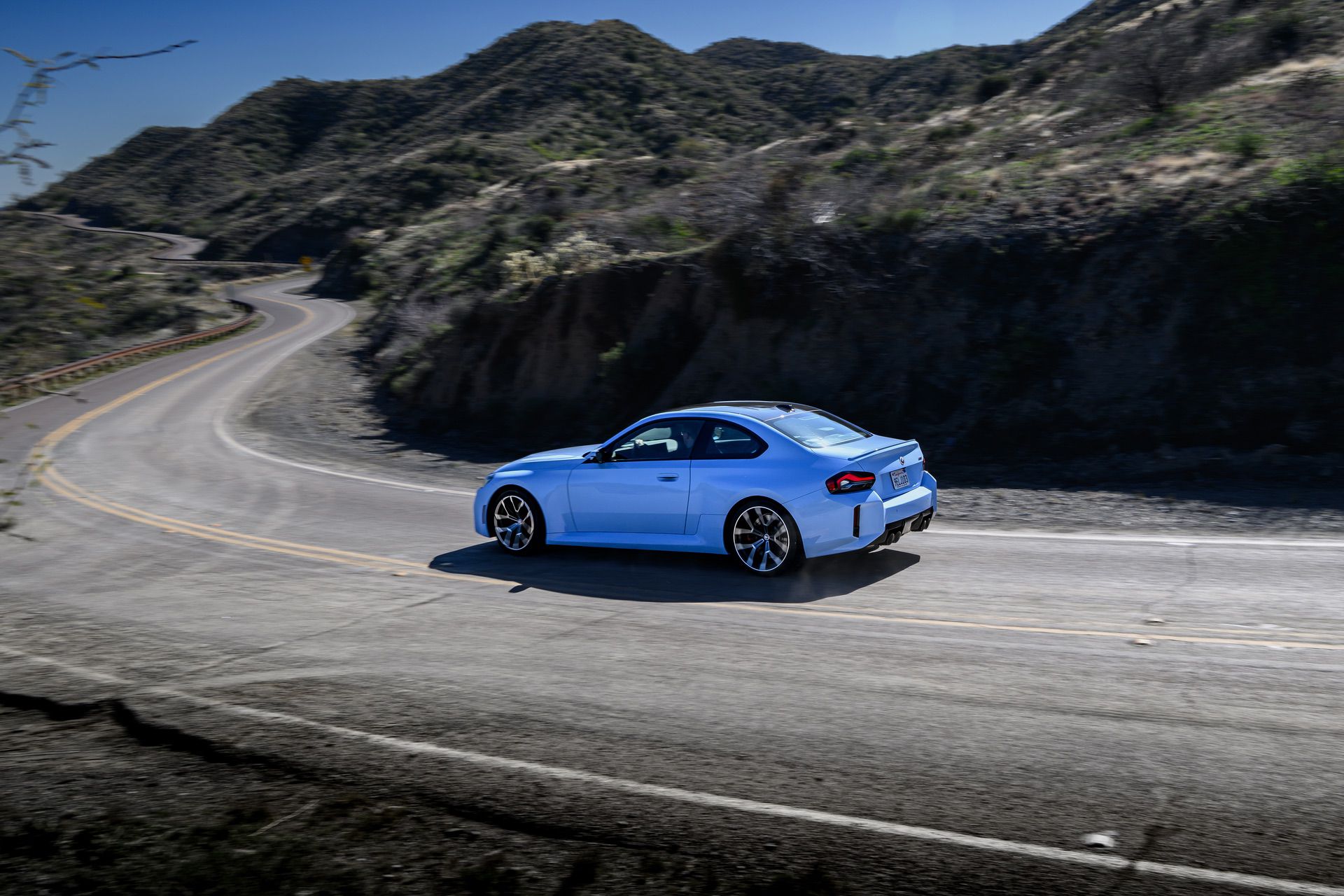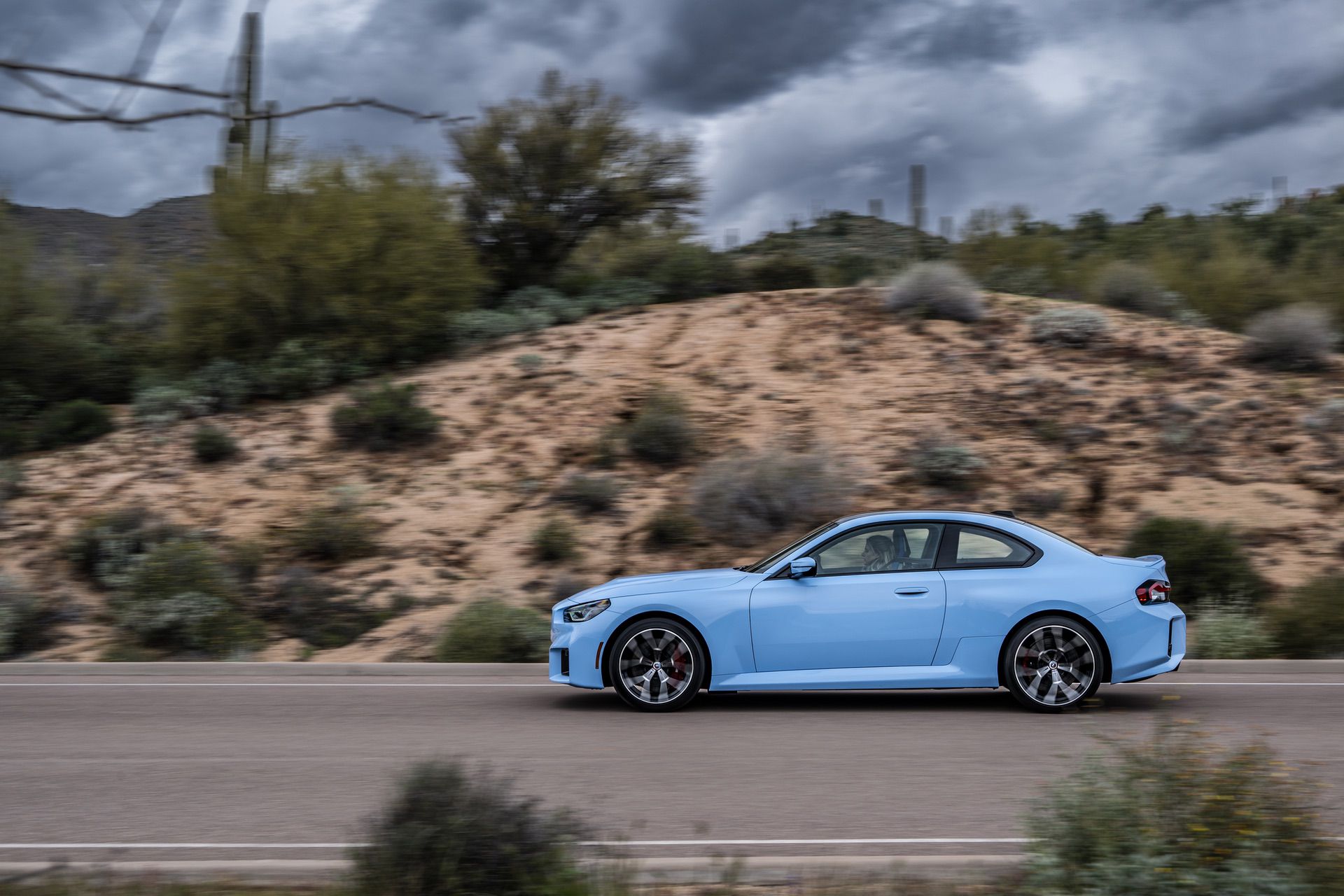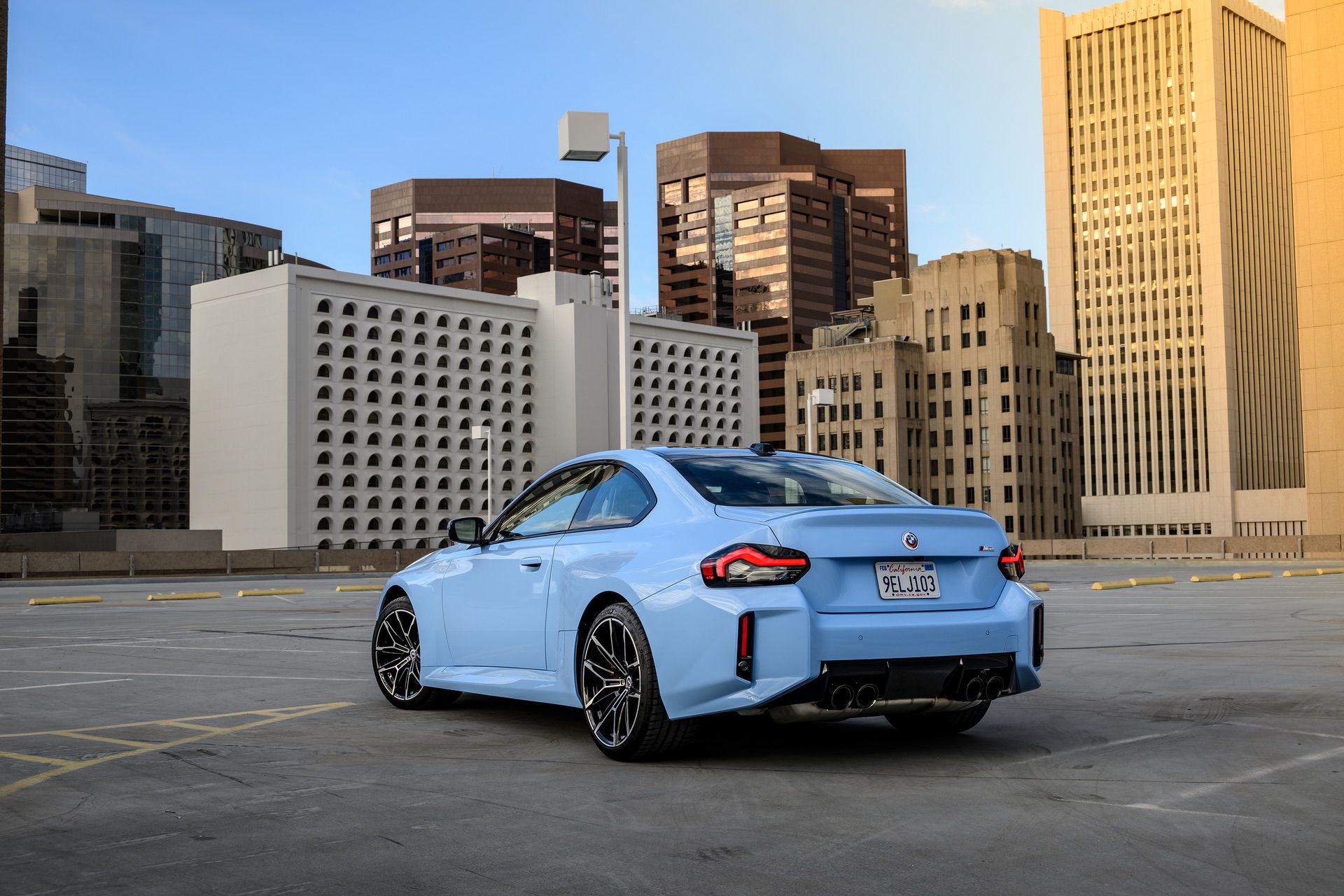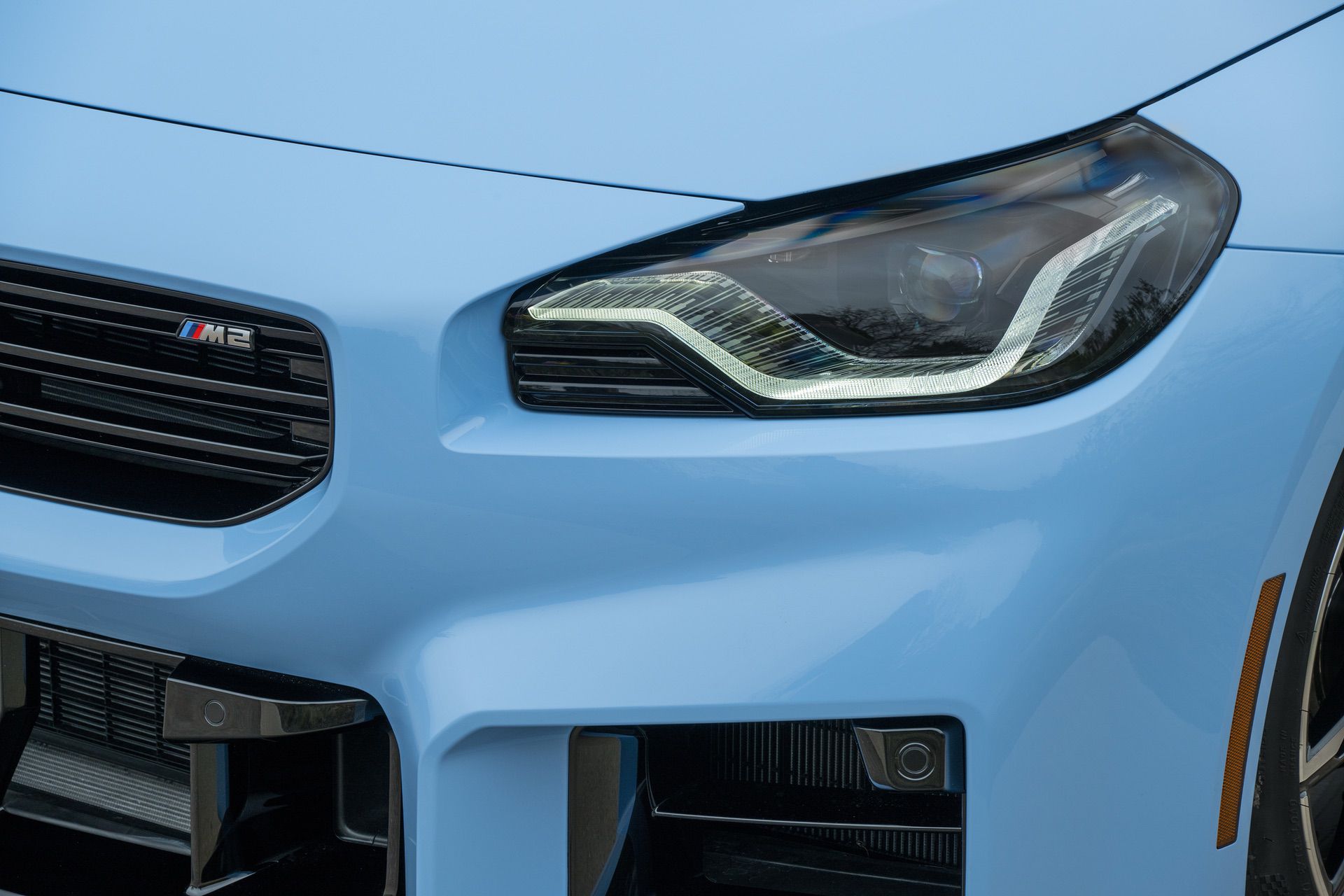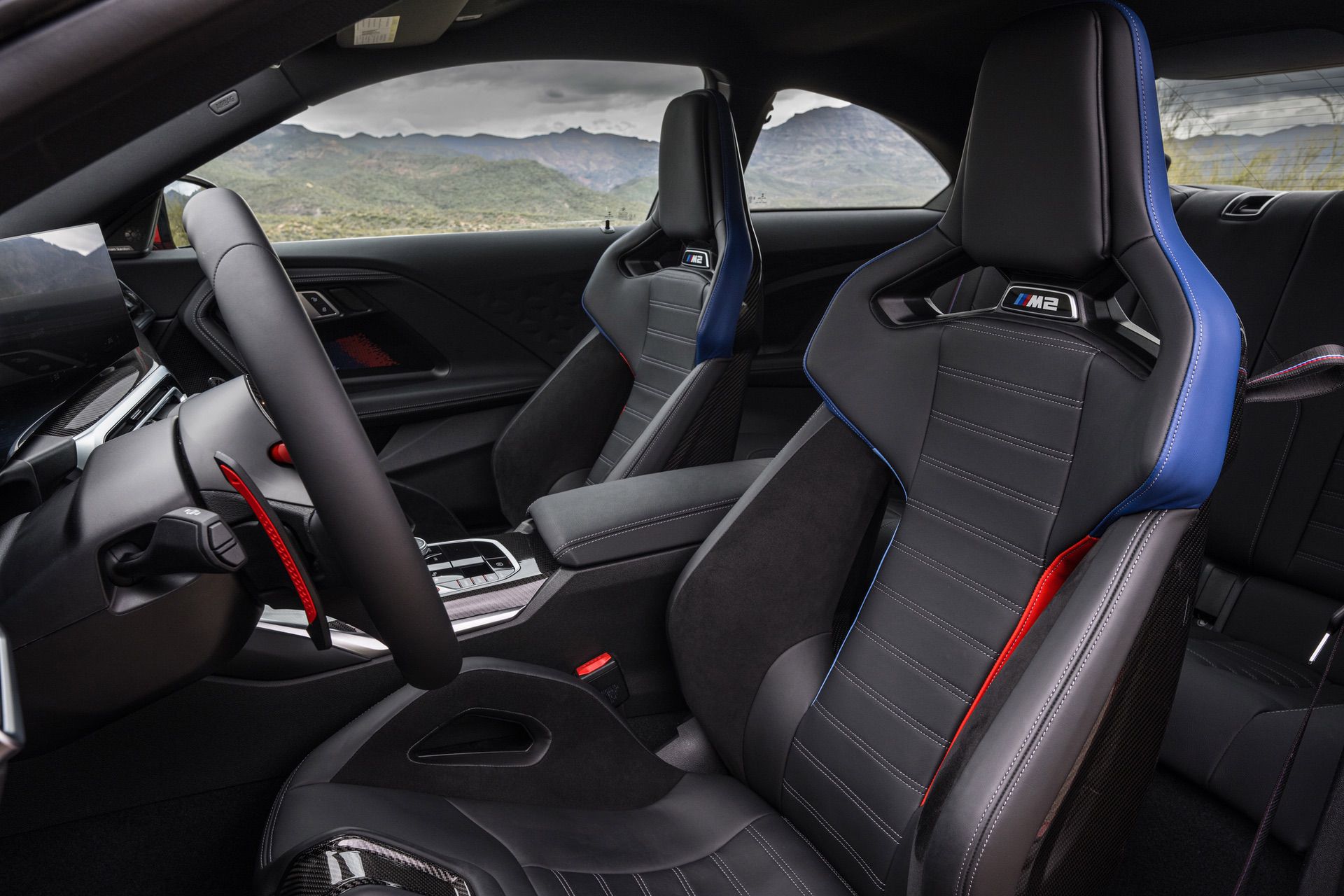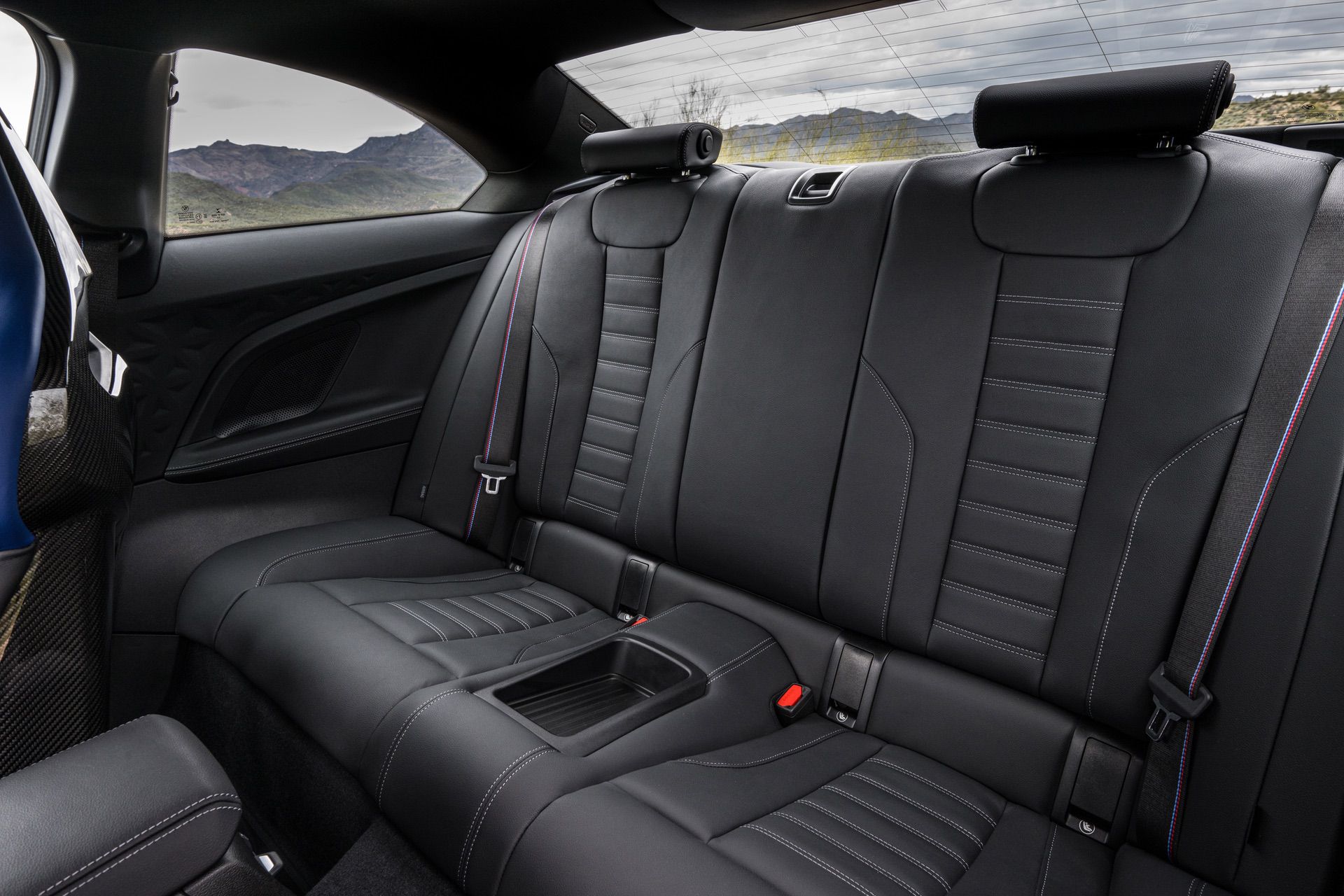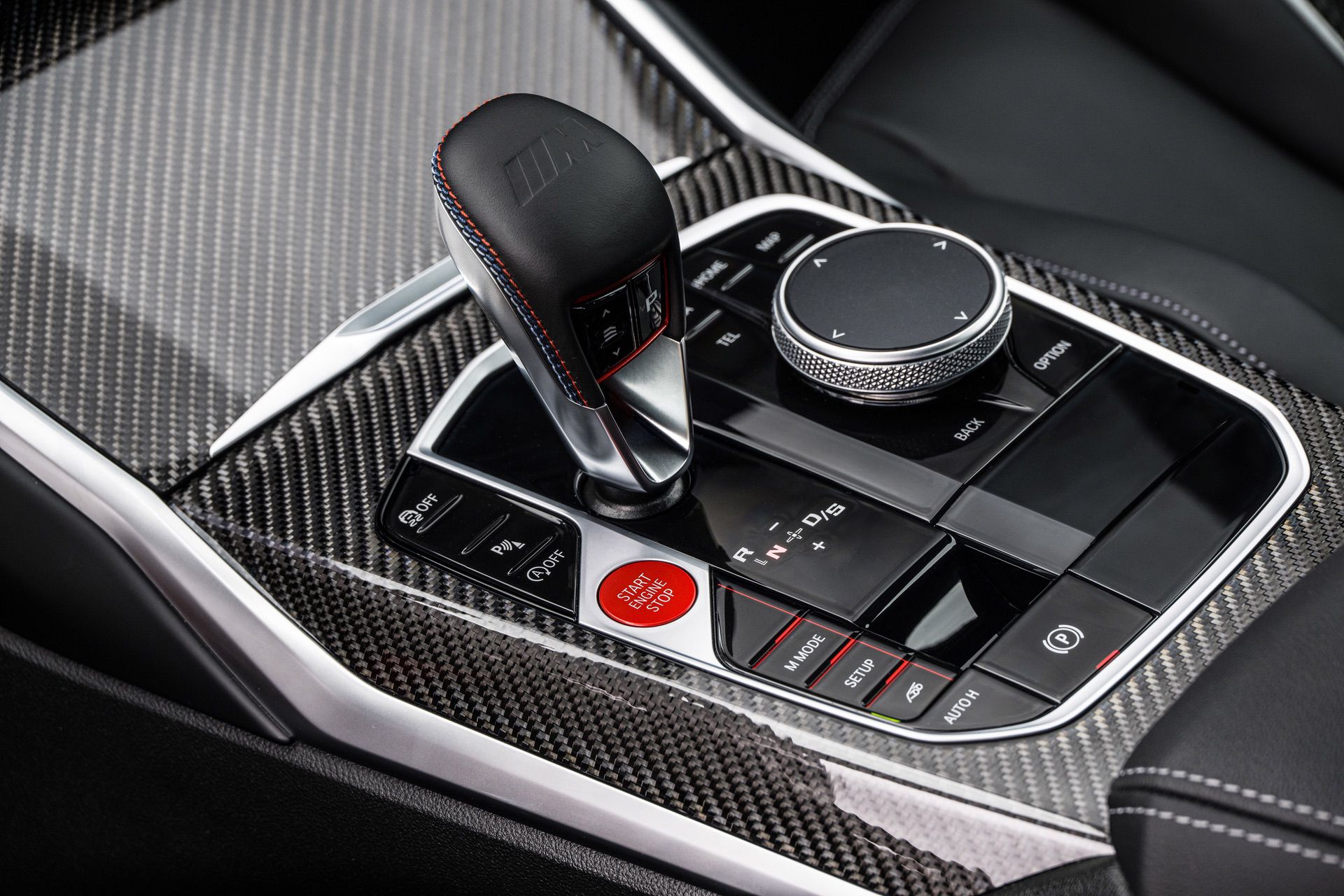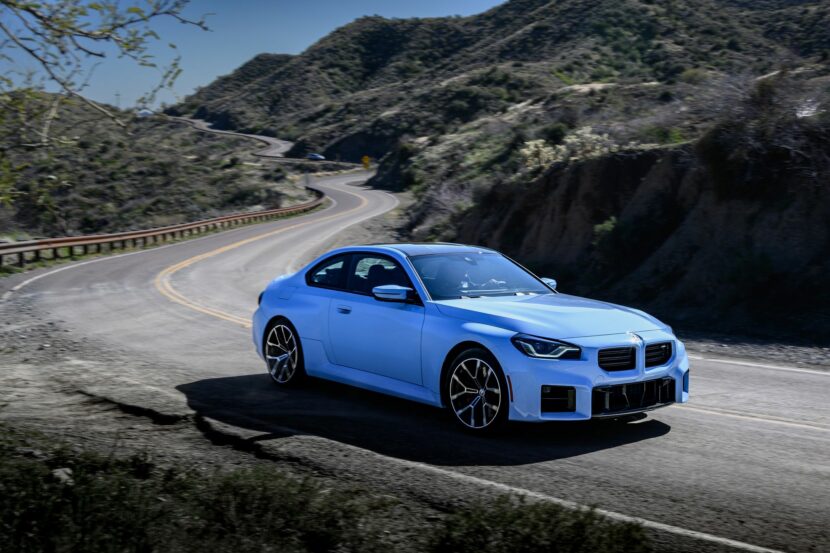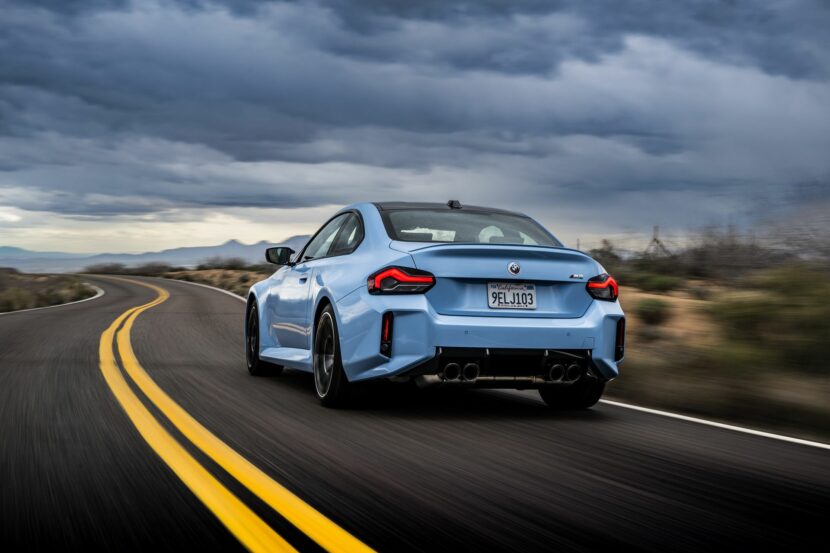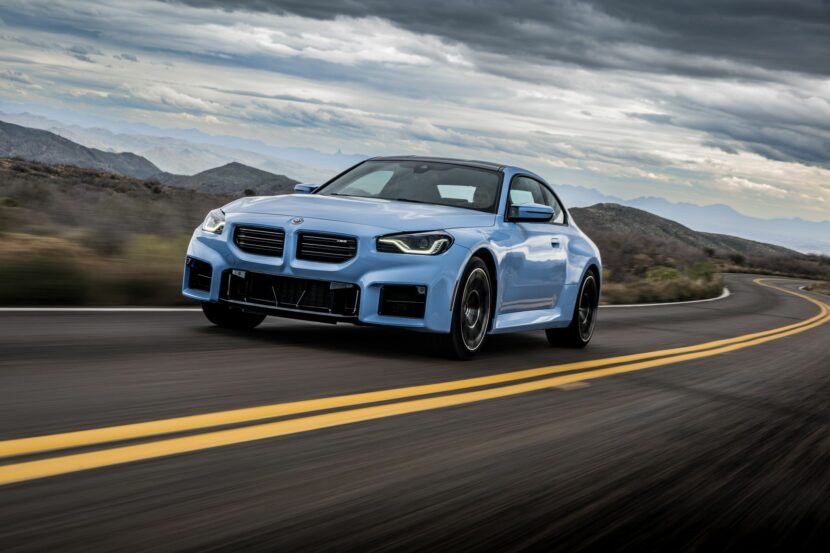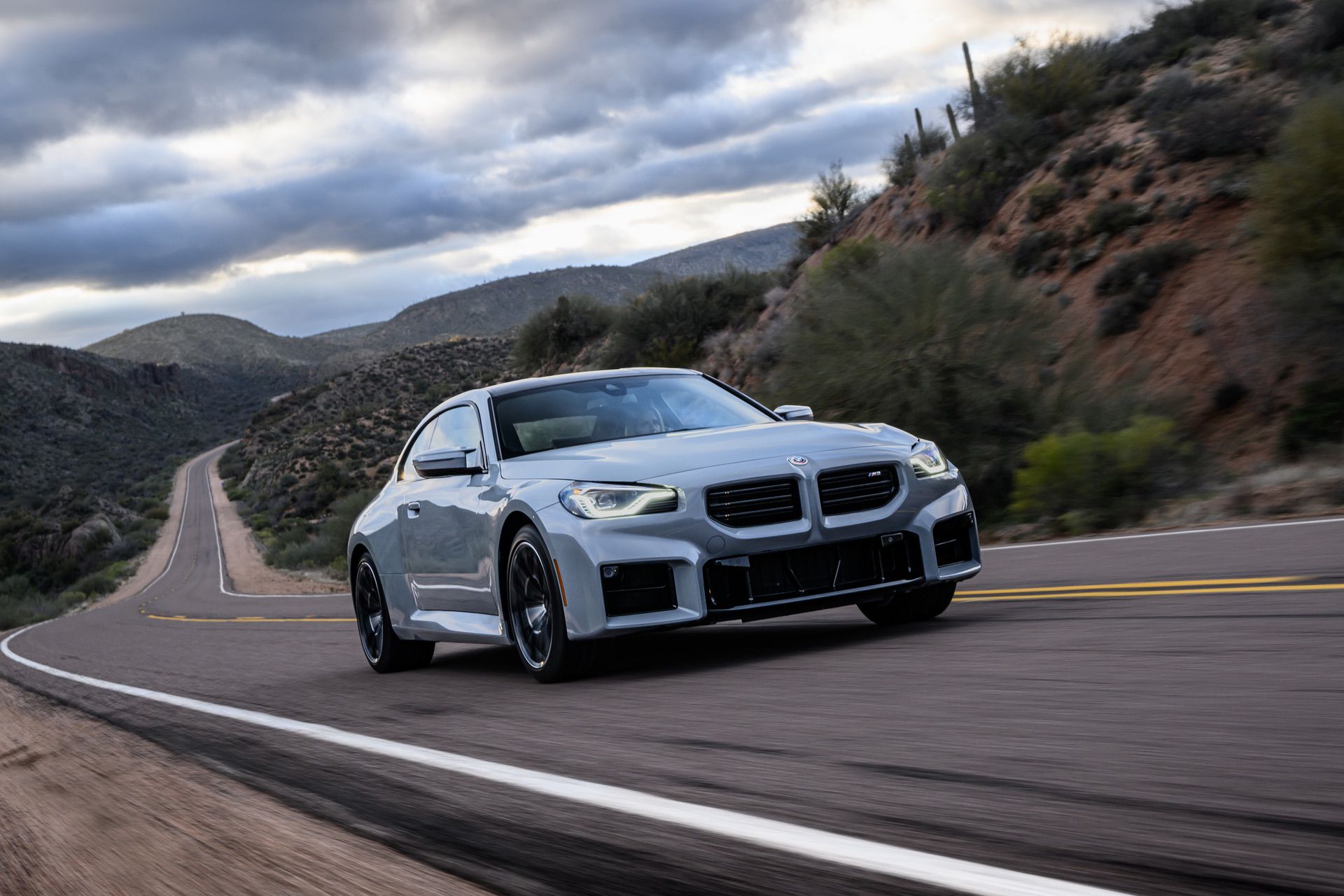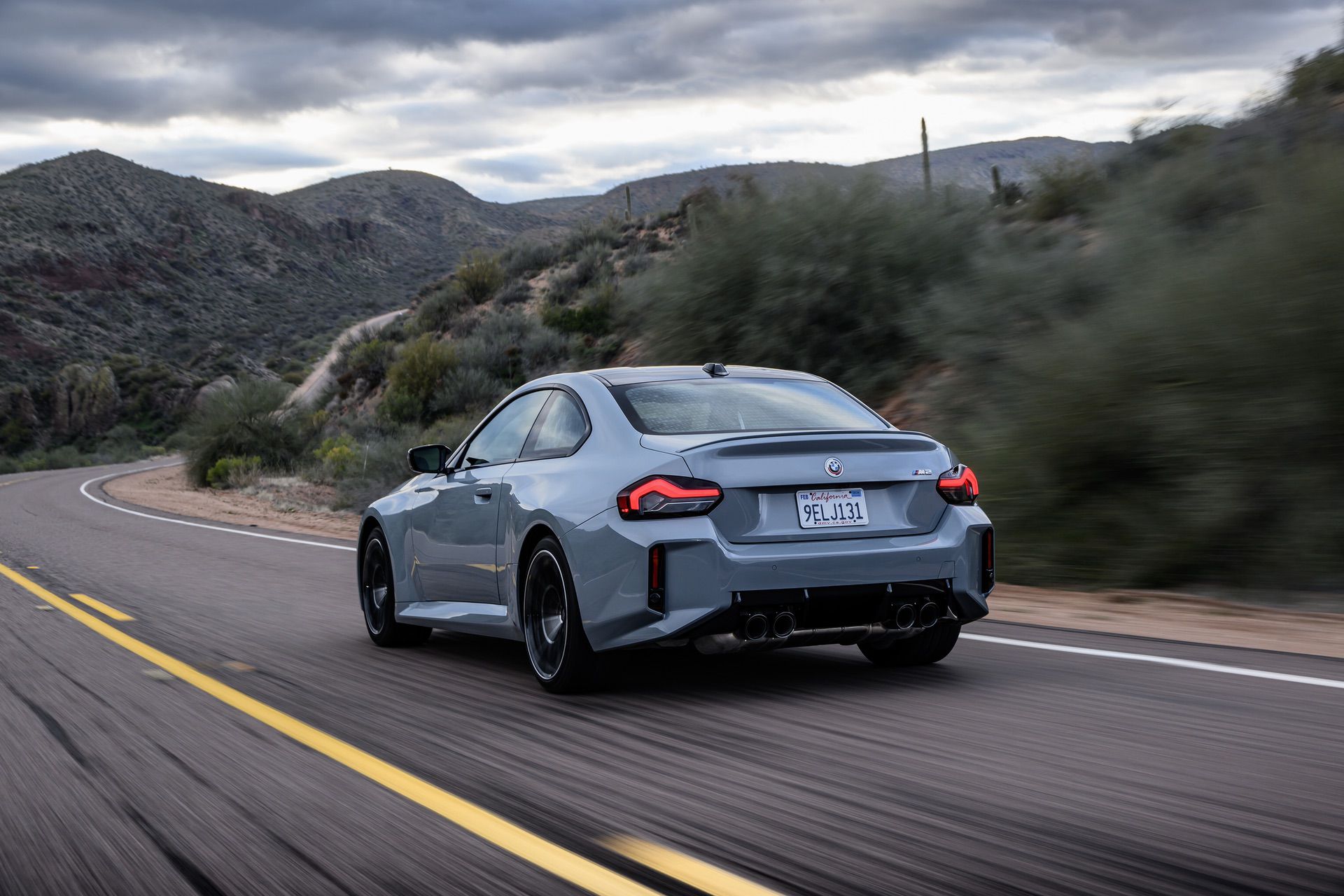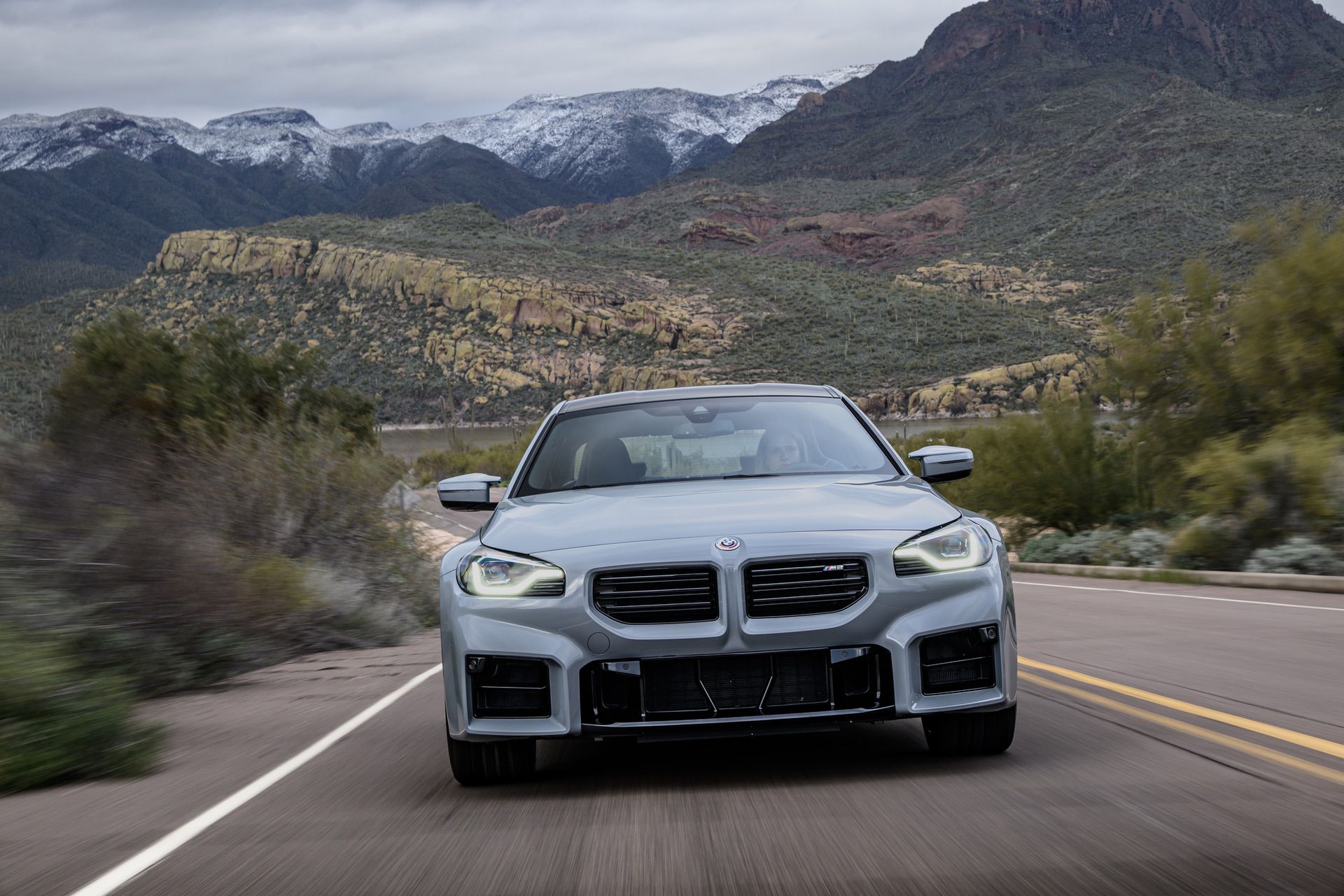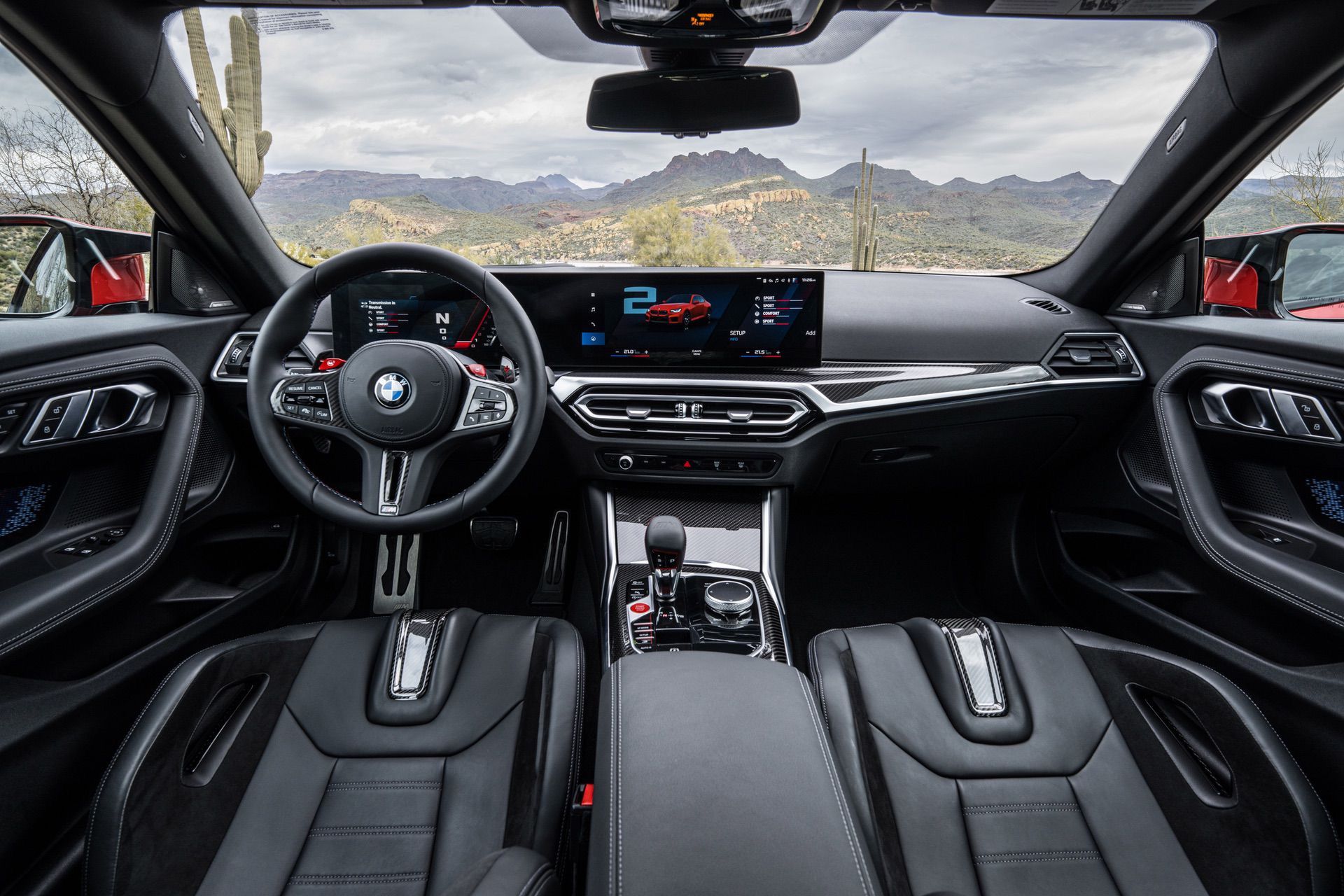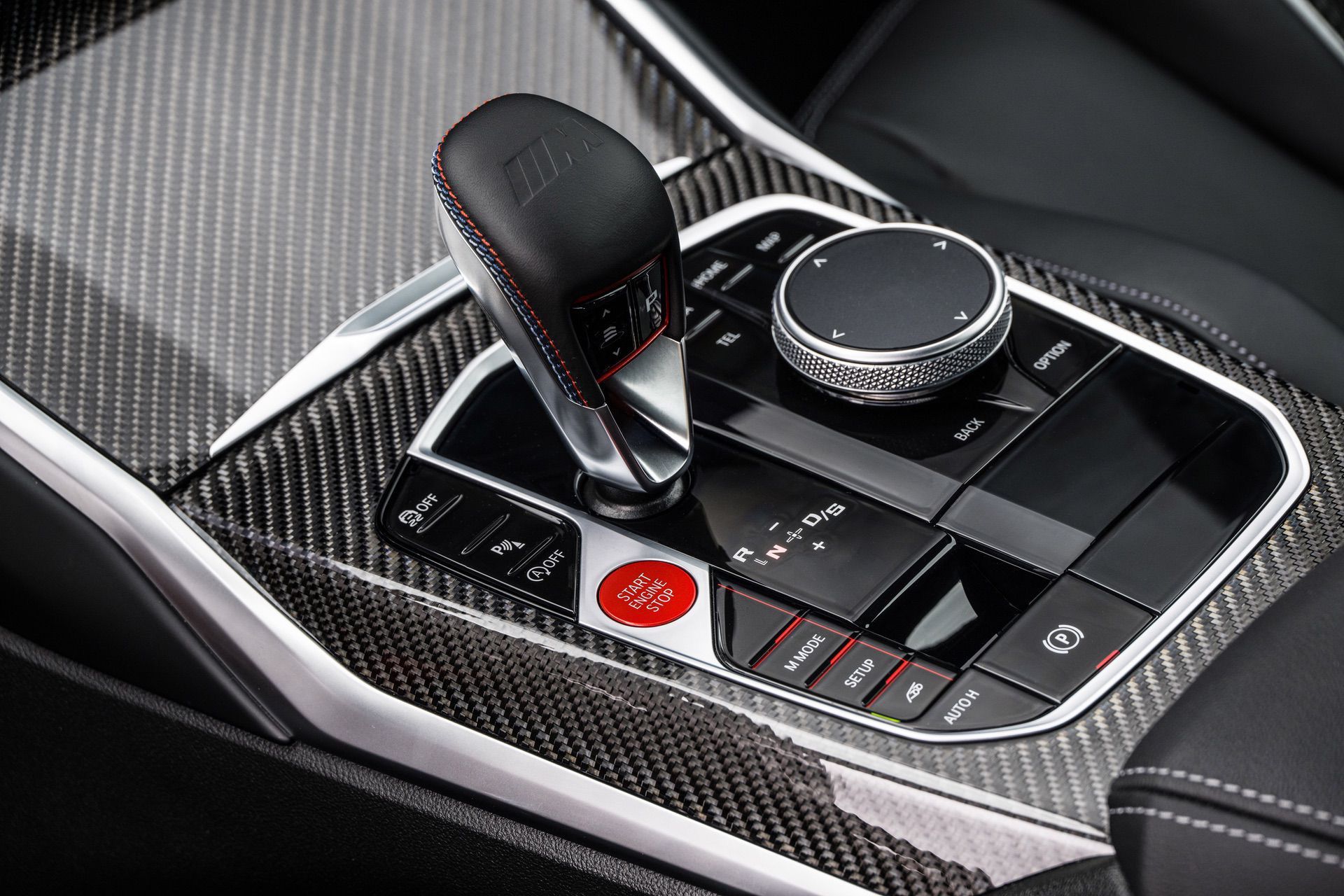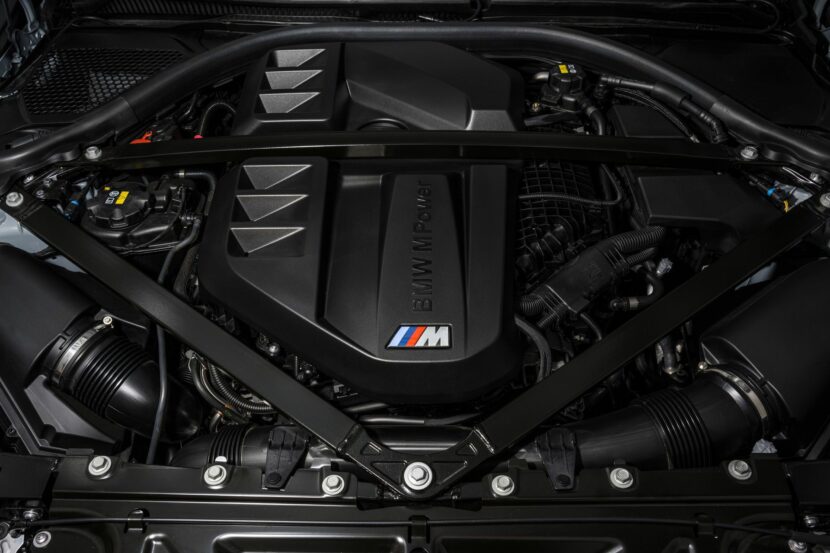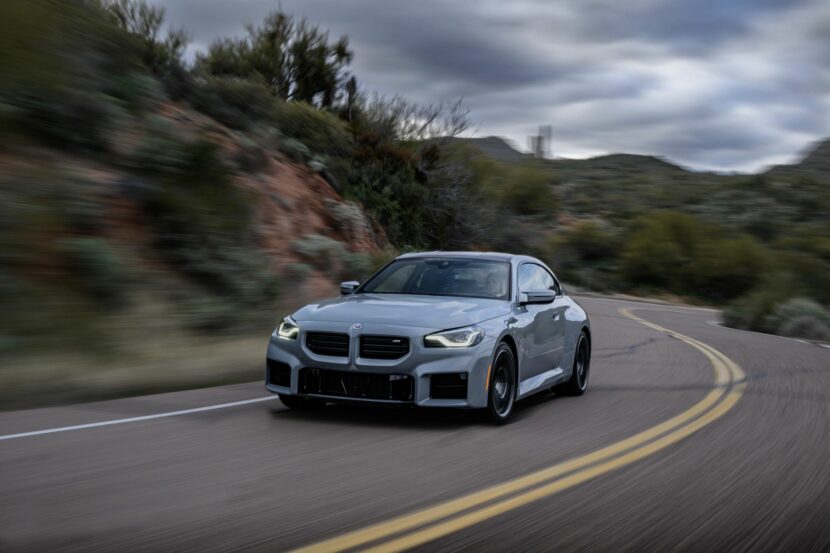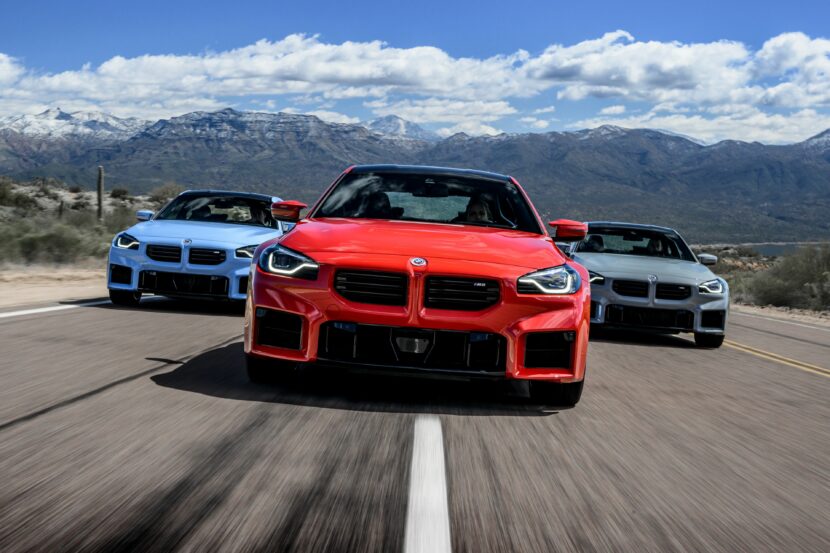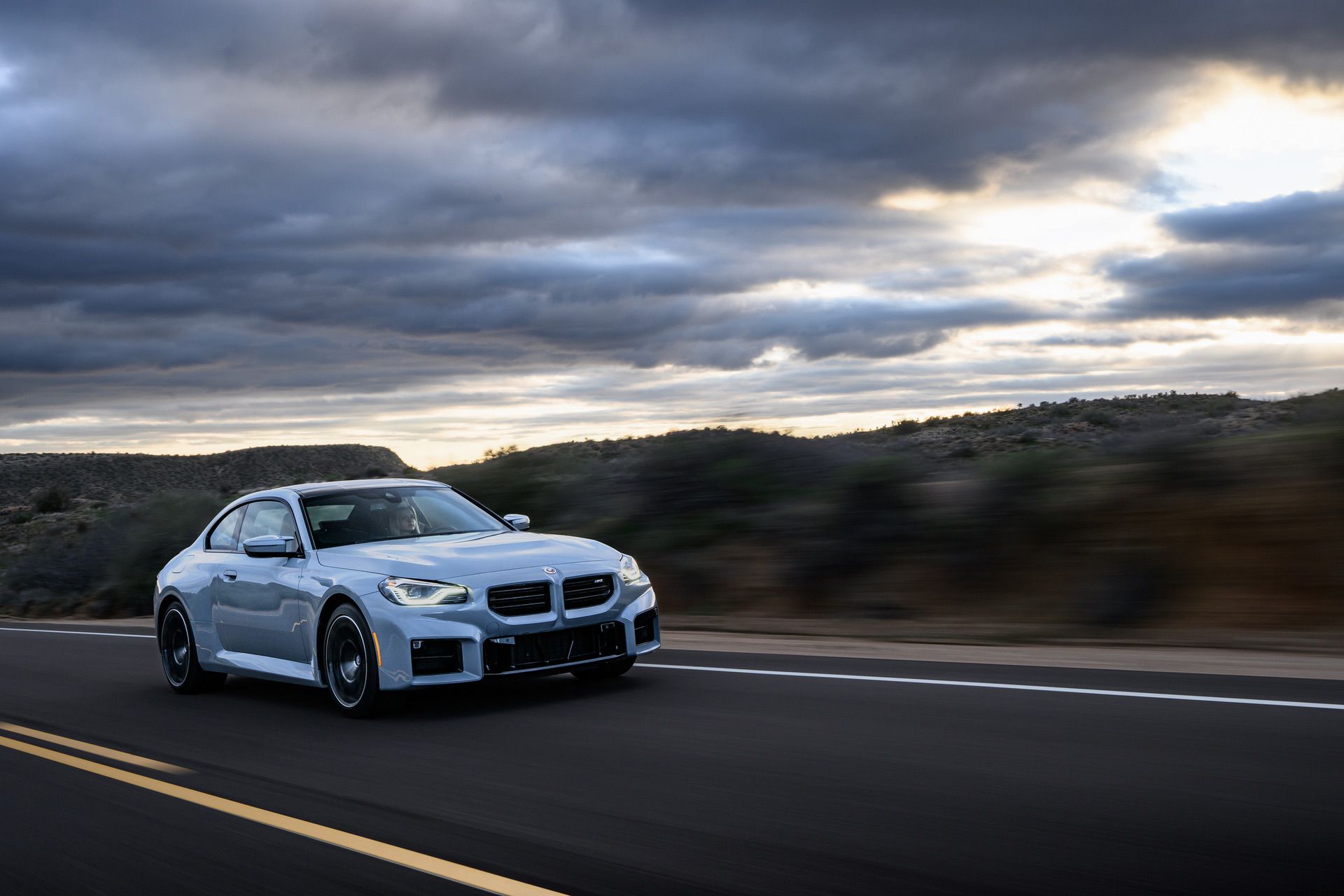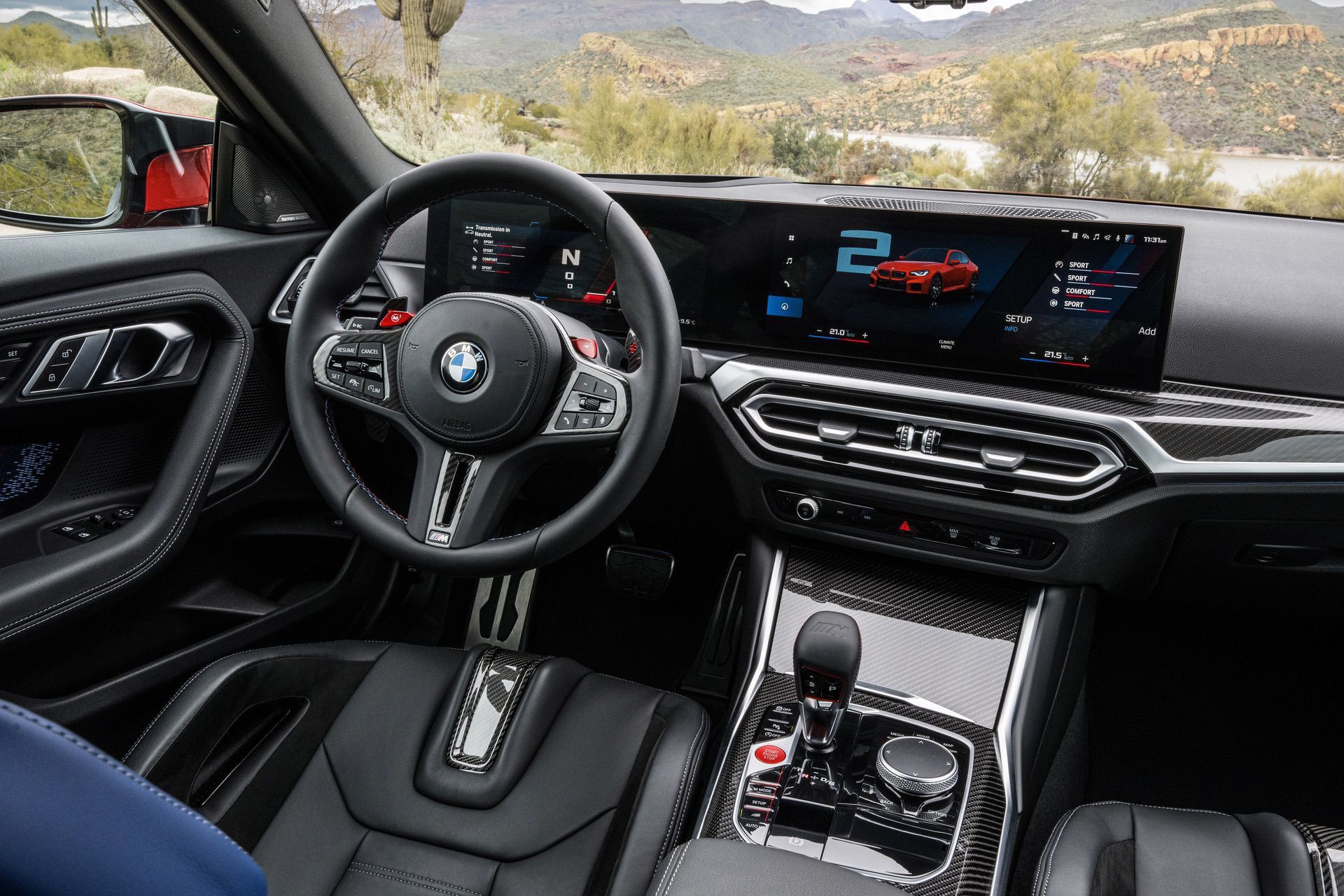After getting a chance to drive the 2023 BMW M2 on public roads, I’m excited to finally share my thoughts on this entry-level “Baby-M.” As someone who previously tested a prototype G87 M2 on the track, I was eager to see how the production version fared in everyday driving conditions. During my test drive, I had the opportunity to try out both the six-speed manual and eight-speed automatic transmissions.
During my drive review of the 2023 BMW M2, I will cover the following points:
- Function-over-form design philosophy
- Parts inherited from the M3/M4
- Chassis improvements
- Comparison to previous M2 Competition and M2 CS models
- A drive review of the six-speed manual and eight-speed automatic transmissions, along with my preference
I will discuss each of these topics in detail to give you a comprehensive understanding of the 2023 BMW M2’s design, performance, and driving capabilities. The goal of full review is really to touch on all the nitty gritty details of the new BMW M2. So without any further ado, let’s dive right in!
Function-over-form Design
The new generation G87 sports car stands in contrast to the outgoing F87 M2, with a bold and, in a way, classy design that pushes the boundaries of BMW aesthetics. The design moves away from the soft and pleasing shapes, and creases of the previous model, and instead features a boxy, squared-up look that exudes confidence and power. As one would expect, the G87 M2 has generated more controversy compared to the previous generation M2. Although it may not be as daring as the M3 and M4, the G87 M2 still manages to hold its own when it comes to social media opinions.
Rather than rehashing our previous reviews of the M2 design (which you can find here), I’d like to share some new insights. According to BMW, the design philosophy behind the 2023 BMW M2 is function-over-form, prioritizing performance over aesthetics. It all started with the idea of building an M2 for the racetrack and that means simplified, minimalistic and aerodynamic shapes. At the front, the two large air breathers replicate in shape the cooling radiators behind. Additionally, there are some tunnels behind the air intakes which lead the air into a more efficient way. The very same ideas apply to the main central air intake.
The kidney grille on the 2023 BMW M2 takes inspiration from motorsport design, featuring horizontal slats that slightly obscure a squared-up radiator behind them. This grille provides ample cooling for the S58 3.0 liter engine. Moving to the side of the car, you’ll notice a more streamlined look compared to the F87 M2, with fewer creases in the bodywork. BMW has focused on creating smooth and clean surfaces for the M2, which not only look sleek but also contribute to improved aerodynamics. As part of this design philosophy, BMW has opted to drop the iconic side gill that was more of an aesthetic feature on recent M cars.
The vertical reflectors at the back of the car have been a topic of controversy for the 2023 BMW M2. At first glance, they may appear to be an afterthought, drawing more attention than they should. However, this design decision was reportedly made deliberately. Despite the criticism, the integration of these reflectors in a vertical position brings significant improvements in terms of aero drag.
While some this overall design may not be the most aesthetically pleasing choice, it shows that BMW prioritized function over form in the M2’s design. Will that make a difference in the eyes of the general consumer or BMW enthusiast? It remains to be seen, but my job here is to report on the findings.
Parts Inherited from the BMW M4
Upon the introduction of the G87 BMW M2, many enthusiasts immediately drew comparisons to a mini-M4. While there are certainly a lot of similarities between the two models, it’s worth taking a closer look to determine whether this label is truly accurate. Firstly, the 2023 BMW M2 gets – thankfully – the same engine 3.0 liter six-cylinder S58 engine. It features a detuned stage – for now – delivering 453 horsepower (338 kW) and 406 lb-ft (550 Nm) of torque. Next, the G87 M2 also inherits the very same transmissions – a six-speed manual gearbox and the ZF eight-speed automatic. They are identical in terms of parts, but slightly different as far as software tuning. Of course, there was no point to reinvent the wheel when it comes to cooling solutions.
Next on the list is steering rack. Again, identical to the one in the G82 M4, but software tuned for the new M2. The same story applies to the differential with the caveat that it comes with different gear ratios. As all of you know, tire choices play an important role in the handling of a sports car. Markus Schröder, BMW M2 Project Manager, says there were a lot of tire lessons learned from the M3 and M4. And in the end, the 19 inch front and 20 inch rear was the best setup for the new M2.
As you might have guessed by now, the Adaptive M Suspension is also coming from the older and larger ///M brothers. And once again, it was fine tuned for the M2’s size and proportions.
Chassis Improvements
The 2023 BMW M2 has undergone several chassis improvements, drawing on lessons learned from the M4. To improve handling and responsiveness, the M2 now includes a range of stiffening parts. For example, there are triangle-shaped braces under the hood, as well as an additional aluminum reinforcement plate that helps to stiffen the front-end and improve turn-in.
But the changes don’t stop there. The front and rear subframes are almost carryover from the M3 and M4. Additionally, the underbody of the M2 features a stiffening shear plate and an underfloor strut, among other enhancements. Perhaps the most significant improvement, however, is the addition of a C-pillar reinforcement plate, which sets the G87 apart from its predecessor, the F87.
These enhancements have a noticeable impact on the M2’s character and performance. In my drive review below, I’ll go into more detail about how these improvements translate to the driving experience. Suffice it to say, the 2023 BMW M2 is a car that’s been designed with precision and performance in mind, and every element of its design has been carefully considered to deliver an exceptional driving experience.
BMW has emphasized that the G87 M2 has its own unique character, and it wasn’t designed to be a mini-M4. According to BMW, the benchmark for the G87 M2 was actually the F87 M2 Competition, not the more performance-oriented and limited edition M2 CS. When asked why the M2 Competition was chosen as the benchmark, BMW explained that it’s considered the mainstream choice, while the M2 CS caters to a smaller audience of performance enthusiasts.
Drive Review BMW M2 Six-Speed Manual
Scottsdale was an ideal location to showcase the 2023 BMW M2, with its winding roads, sharp corners, and challenging elevations putting the car’s driving dynamics to the test. The surrounding Phoenix and Scottsdale areas offer plenty of hairpin turns and twists that allow drivers to fully experience the M2’s performance capabilities. The only thing missing was a track component, but with the variety of challenging roads available in this area, the M2 was still able to show off its true potential.
The test drive for the 2023 BMW M2 included a diverse range of roads, including an extended period on the highway that allowed me to experience the car as a typical daily driver. The first thing that caught my attention was the updated M Modes. In response to feedback from F87 customers, BMW has extended the difference between the COMFORT and SPORT/SPORT+ modes. This isn’t surprising, as we’ve seen similar changes in other new M products. As a result, the Comfort mode now provides a more comfortable and plush ride, with a softer suspension setup and steering.
While the 2023 BMW M2 aims to appeal to a wide audience, it also has a dedicated fan base of driving enthusiasts to satisfy. That’s where the SPORT mode comes in. This mode is designed to deliver a more aggressive driving experience, building on the already impressive setup of the outgoing F87 M2 Competition.
In SPORT mode, BMW has made a number of tweaks to enhance the car’s performance, including adjustments to the chassis, suspension, and steering tuning, as well as recalibrating the engine throttle and transmission. The brakes are also noticeably more aggressive in SPORT mode, allowing drivers to push the car to its limits on the track or on winding roads.
BMW M2 Six-Speed Manual Zandvoort Blue
Highway Driving
During my time on the highway, I had the opportunity to test drive both the manual and automatic versions of the M2. To be honest, neither choice is superior to the other. The automatic gearbox proves to be more convenient and hassle-free in stop-and-go traffic, while the six-speed manual, as anticipated, provides a more immersive driving experience. However, when cruising along the highway, I frequently lost track of which transmission I was using.
Winding Roads
Once I hit the fun backroads, my driving experience transformed, and my workload inside the car increased. The manual transmission felt like the best option as there’s something thrilling and rewarding about manually shifting gears. It adds an extra layer of excitement to the driver’s experience and makes me appreciate the M brand even more for “Saving the manuals.”
When it comes to comparing the suspension in the new M2 versus the F87, then a few things immediately stand out under heavy loads. First of all, the suspension works a lot more in the G87 because of the stiffer chassis. The dampers do a good job handling the weight of the car allowing in turn for more driver control. The ride is also not twitchy as in the F87 M2. Of course, you can also still adjust the suspension firmness, thanks to the standard Adaptive M feature.
The V-shaped strut tower brace and the reinforcement plate under the hood further increase stiffness and sharpness in the front end, making the M2 turn in better by removing chassis slop. And that’s the first thing I noticed compared to the F87 M2: sharper turn-ins and quicker to accelerate out of corners. Overall, the front axle is much better than in the previous M2 Competition, with a high level of grip and cornering stability. And there’s pretty much no understeer with the front just gripping that asphalt. The wider tires help as well.
Chassis reinforcements do make a difference
Do you remember the C-pillar chassis reinforcement we discussed earlier? Well, it’s time to reveal its impact on the driving experience. This engineering trick not only reinforces the entire chassis but also has a direct influence on the rear end. The G87 M2 has noticeably less of a tendency to “bite you” thanks to this enhancement. It stays stable and composed during high-speed cornering, of course, with all the safety features engaged. Compared to the F82 M2 Competition, the G87 M2 is less playful.
In the MDM mode or with DSC completely off, the rear end will break traction giving you those cool slides that put a smile on our faces. So that’s always an option, as long as you know what you’re doing. The 2023 M2 also comes standard with the M Drive Professional feature. This feature provides an extremely satisfying drift analyzer and M Traction Control with ten positions, which allows you to reduce the electronic aids and easily slide the rear of the vehicle. The control panel is user-friendly and has an M Mode button, which simplifies the process even more. The Sport mode reduces the system’s intervention, while the Track mode completely deactivates the assistance systems.
It’s also worth noting that the F87 M2 Competition was known for its oversteer which required quicker reactions from the driver. But in the case of the 2023 M2, the oversteer is a lot more controllable giving me a lot of confidence in the car. Of course, the Active M Differential, that can send lock up to 100 percent, plays an important role as well.
Inspires confidence at high speeds
As mentioned in my video review, I’d like to reiterate that the new 2023 BMW M2 has a unique ability to make you feel like a skilled and speedy driver, even if you’re not. It gives you the impression that you can jump in the car and immediately accelerate at a thrilling speed.
When driving in SPORT or SPORT+ mode, body roll is virtually non-existent, at least on normal roads. It’s possible that a professional driver may have a different experience on the track and at higher speeds, but for the average driver, body roll is not noticeable. Of course, the COMFORT mode changes that perception a bit, but even then, the G87 M2 is still very composed and precise in its driving behavior.
The manual in the M3 and M4 has been criticized by several journalists (us included) for being vague and rubbery, and that’s pretty much the same experience in the new M2. But in the end, it still offers a good amount of connection between the car and driver, and we’re just simply happy to have it as an option. Rev matching works great, if you need it, and luckily, it can be turned off without going into full DSC OFF.
The brake-by-wire system allows for customization of brake pedal feel, for which BMW is offering a Comfort and Sport mode. I drove mostly in the Sport setting and the braking power was more than adequate for “normal” daily driving.
Regrettably, I was only able to test the carbon bucket seats and missed out on the opportunity to try the M Sport seats, as the manual transmission and M Sport package-equipped vehicle was assigned to other journalists. Nonetheless, I did manage to sit in the M Sport seats briefly during a lunch break, and despite the visually impressive appearance of the carbon bucket seats, I believe that for extended periods of driving, I would prefer the M Sport seats. Being a relatively tall individual at 6″2, entering and exiting the corners with bucket seats can be cumbersome.
Drive Review BMW M2 Eight-Speed Automatic
After my time with the Zandvoort Blue M2 six-speed manual transmission, I hopped into a Brooklyn Grey M2 with an eight-speed automatic transmission. The last leg of my seven-hour journey with the M2 involved driving from Bartlett Lake to Scottsdale on a mix of winding roads and highways. My primary goal is to identify any discernible variations in driving, beyond the clear distinction between manual and automatic components.
Earlier in the day, I spoke with Schröder and asked whether the choice of transmission played a role in the engineering and testing of the M2. Their response was clear: to them, it is simply one car. Naturally, I followed up with a question for someone who has spent extensive time with both M2 models: have you observed any noteworthy distinctions in the driving characteristics? “The car should ‘feel’ the same if you swap the gearbox,” Schröder said. But with a caveat: “It also comes down to your personal preference, some people might notice a difference, while others won’t.”
BMW M2 Brooklyn Grey 8-Speed Auto
They don’t feel much different
Keeping this in mind, I embarked on my journey. Although the automatic transmission may not offer the same level of engagement and excitement, it does make cornering significantly easier with its smooth and precise shifting. It effortlessly propels you to high speeds without any noticeable delay. As a result, driving fast becomes even more enjoyable since the workload is reduced and you can focus solely on executing the perfect line and braking points. It’s also worth pointing out that there are different gear ratios in the differential, so that will deliver a slightly different feeling.
Apart from that, the various M2 models have a similar feel. In my video review, I provided more detailed information about which one I would ultimately choose. To summarize, if you plan on keeping the M2 for a significant period of time and enjoy a more immersive driving experience, then the manual M2 is the ideal choice. Moreover, it’s probable that the manual M2 will have better resale value in the long run, considering it’s the final model with this feature. The exception being a potential future Z4 M40i with a six-speed manual, which we will disregard for now.
If you regularly navigate through heavy traffic and value the ease of an automatic transmission, the M2’s 8-speed auto is a reliable option. This transmission has been extensively tried and tested in numerous BMW models and is highly regarded for its exceptional performance.
Ultimately, there is no definitive right or wrong answer in this situation. While I would like to provide a scientifically-supported conclusion or a data-driven decision, the reality is much simpler: the choice ultimately rests with you.
Allow me to share a personal anecdote to illustrate this point. I am the proud owner of a BMW 1M, which I believe is one of the most fascinating M cars to emerge in recent decades. This vehicle boasts a raw drive, a six-speed manual transmission, a firm chassis, and rigid suspension. While I derive immense pleasure from navigating the 1M along winding, scenic mountain roads, I find driving it in congested traffic to be a chore rather than a joy. While it is undeniably impressive, it is often exhausting.
After spending several hours with the six-speed M2, I found that switching to the automatic transmission increased the fun factor exponentially. This was largely due to my increased confidence in the car’s driving capabilities. I effortlessly cut through corners, and turn-ins were just as sharp as before, but I found myself pushing the car closer to its limits. I also engaged the MDM mode, which provided some tailspin and kept me highly engaged. I briefly turned off the DSC, but I would not recommend this unless you are experienced. The engine delivers a lot of power early on, so the car can quickly bite you when you least expect it.
S58 – One of the best BMW engines ever made
When it comes to the engine, the S58 stands out as a truly remarkable feat of engineering, likely to be regarded as one of BMW’s finest. The S58 engine has gained a reputation for its seamless power delivery, superb throttle response, and polished performance. The exhaust sound – amplified inside by the Active Sound – is quite rewarding, offering that combination of deep growls and blurbs known from other M models.
Interestingly, the S58 seems to perform even better in the BMW M2, despite the car’s weight, which is comparable to that of the M4 – weighing in at 3,814 lbs compared to 3,850 lbs for certain configurations. It’s either a placebo effect or due to the shorter wheelbase. But as always, the weight might not matter as much as long as the car manages to properly handle it without sacrificing performance. I’ve experienced that even in the 6,000+ BMW XM which absolutely feels lighter than it actually is.
BMW has provided limited comment on the weight of the vehicle, but they did share some insights. The majority of the weight can be attributed to the utilization of the platform, drivetrain, cooling system, and other components from the M4 model. Furthermore, since the M2 is an entry-level BMW with a price tag of $60,000 or more, there are minimal weight-saving measures incorporated. In addition, the latest pedestrian safety regulations, as well as increased standard equipment, contribute to the M2’s overall weight, resulting in a vehicle that is relatively heavy.
In a way, the weight is comparable with similar products in the segment, sans some of the highly exclusive Porsche products.
Feels more like the previous M2 CS
After extensively comparing the new 2023 BMW M2 with the F87 M2 Competition, I have come to the conclusion that a more fitting comparison would be with the M2 CS. During my prototype drive, I found that the new M2 already meets the performance level and driving dynamics of the F87 M2 CS, making it a superior choice over the base M2 or M2 Competition. With its refined and engaging features, the future M2 variants are sure to be impressive.
Although BMW isn’t currently working on an M2 Competition (based on what we know), it’s likely that they have some things in the pipeline that we’ll see in the future. We anticipate that BMW will eventually offer a more potent base M2, either in a Competition form or with an M xDrive component. It’s not difficult to foresee this development, given that G87 production is set to continue until 2030, providing ample opportunity for creating new excitement around the product.
Moreover, it’s even more apparent that a second generation M2 CS is in the works. I’m fairly confident that this variant is coming, for several reasons. First, we’ve already seen an M2 CS. Second, the CS brand is highly regarded within the M portfolio. Third, the CS products utilize mostly off-the-shelf parts and are profitable for the brand. The only question that remains is whether the production run will be as limited as that of the M3 CS and M4 CS, or if BMW M will offer a higher volume.
The Most Fun M Product Today
Although this is potentially the only prejudiced remark in this review, I must confess upfront that I have always had a fondness for smaller and more agile M products, including classic models such as the E30 and E36 M3s. My passion for these vehicles only intensified after I acquired my 1M. As soon as the first M2 became available, I immediately became enamored with it, even though it had an initial N55 non-M engine.
Even without any bias, the 2023 BMW M2 would still rank at the top of my list among new M cars. It is an exceptional product that only a few automakers offer nowadays. The car is a true driver’s delight, with the added benefit of versatility with four seats and a highly coveted six-speed manual transmission. It has been a while since I’ve been this excited about a new BMW; my recent reviews have been reserved and critical, especially regarding the XM. However, I cannot find any faults with the 2023 BMW M2, at least not when evaluated independently.
Admittedly, when compared head-to-head with Porsches, Corvettes, or other legitimate sports cars, some of its shortcomings may be revealed. Nevertheless, for BMW enthusiasts, this new M2 is the ideal product, except for the somewhat controversial exterior design, which can be overlooked.
2023 BMW M2
Good
- Great handling
- 6-Speed Manual
- Versatile driving modes
Bad
- Large display overpowering the interior
- Lack of physical buttons to control AC
- Limited rear seating space









